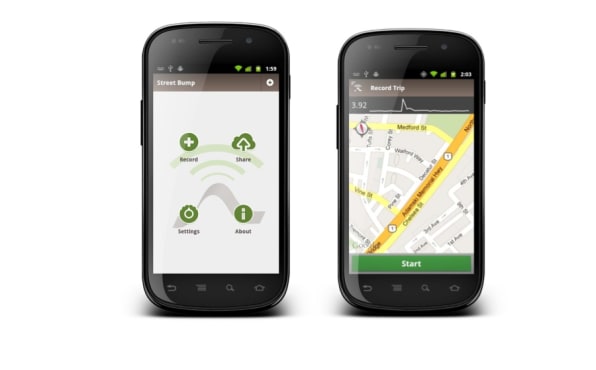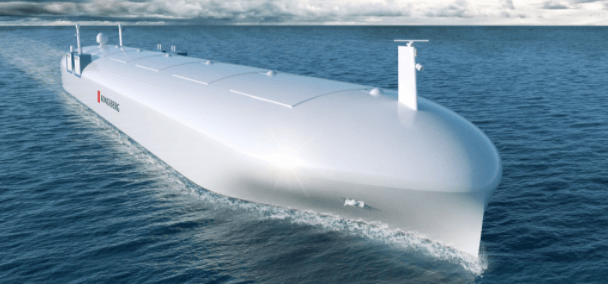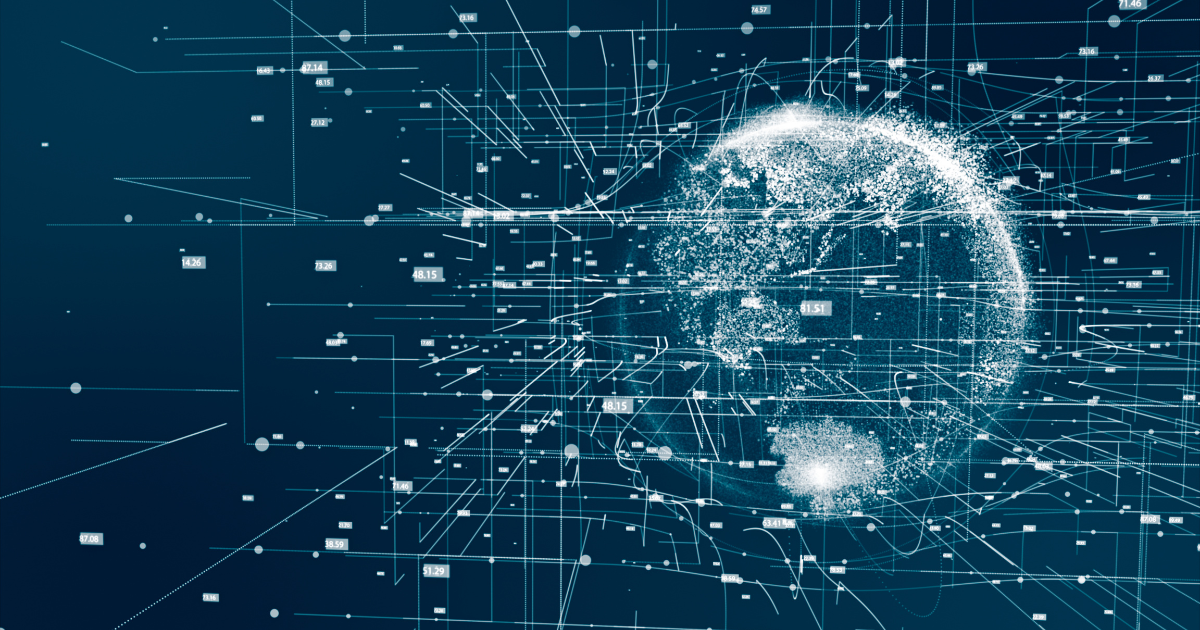
September 14, 2021
AI, big data, and machine learning in transportation
Author:

CEO & Co-Founder
Reading time:
16 minutes
Faster, more efficient, cheaper, and cleaner transportation – that’s how we can summarize the role of AI, machine learning, and big data in transportation. Intelligent solutions and technologies transform the way we transport goods and passengers. No matter where you look, whether it’s aviation, cargo transportation, or public transport–intelligent technologies take it by storm. In this article, we are going to show you the current role of AI and big data in transportation. Are you ready for the revolution?
For starters, let’s take a look at the way the market of AI in transportation grows. According to the latest market data, AI in transportation is more and more extensively used. Deep learning, which is a more advanced version of machine learning, remains the primary technology in this sector. The other two prevalent technologies are computer vision and natural language processing.
Interested in machine learning? Read our article: Machine Learning. What it is and why it is essential to business?
AI in transportation: Market size
According to Prescient & Strategic Intelligence “AI in Transportation Market Overview”, predictions are that improvements made available with AI could add up to 13 trillion USD to global economic output by 2030. In 2017, the global market of transportation-related intelligent technologies (including deep learning, computer vision, and NLP) reached about 1.4 billion USD[1]. Predictions are, it should grow to a whopping 3.5 billion USD by 2023, achieving a CAGR of up to 14.5% during the 2017–2023 period.
Now, obviously, the dynamic growth of this market is driven primarily by many benefits AI can deliver to transportation, including:
- Increased efficiency
- Enhanced pedestrian and driver safety
- Lower costs
- Improved operations
- Eco-friendliness

Global Artificial Intelligence in the Transportation Market by Technology, 2013-2023 (US$ Millions) Source: Prescient & Strategic Intelligence. 2018. “AI in Transportation Market Overview.”
The dynamic of this growth is indisputable. However, we need to be more specific in order to show you the full potential of AI and big data in modern transportation. Let’s start with big data in transportation. This direction is the most reasonable one; after all, even AI and ML are typically based on big data.
Big data in transportation
Big data allows you to get a more thorough insight into your company’s operations. When it comes to transportation, we can talk about improving the way your vehicles work, but also something called predictive analytics. Thanks to these solutions, you can predict possible delays, tweak your routes, and reduce the cost of moving wares around. And there’s more:
Asset management
For starters, we have something called asset management. When it comes to big data in transportation, this area can have a broad meaning. After all, we have engineering data, maintenance data, traffic data, and road data. Just think about all the maintenance logs, IoT sensors, visual sensors, and GPS equipment – all of these data points provide you with tons of vital information that can be used to make the most of assets in your company, including vehicles and other equipment.
This way, your company can make better business decisions, reduce operational costs, and improve work efficiency. Moreover, your company obtains a more reliable and useful route network, making the everyday work even more efficient. Even when we talk about the aviation industry, asset management comes in handy when it comes to implementing predictive maintenance and avoiding potential risks.
Traffic management
Managing traffic can cause a lot of headaches, especially in highly congested cities. Thankfully, big data comes to the rescue! Thanks to a combination of real-time data, historical trends, and intelligent algorithms, big-data-powered tools can take all the available information (concerning vehicles’ speed, weather and road conditions, special events, and even accidents) into account to improve traffic management. Both logistics companies and local authorities can use these solutions to enhance managing traffic and lower congestion and CO2 emissions.
Supply chain management
This element is particularly important in the covid-19 times. Logistics companies all over the world try to keep their supply chains intact, and with the use of big data analytics, that’s not only possible but effective, too! Route optimization, delivery sequences, delivery status, all that can be improved with big data. Moreover, you no longer have to rely just on historical data.
Now, it’s possible to predict product demand and customer requirements with much better precision. In other words, big data paves the way to the enhanced allocation of resources and optimization across different supply chains. This way, distributors and wholesalers can predict the right amount of products they will be able to sell, thus lowering the risk of the so-called dead stock issue.
And while we are at the dead stock problem, let’s talk about inventory management. Today, it’s a crucial aspect of everyday work in every e-commerce and retail company. Large retail chains have tens of warehouses, frequently spread around the globe. These warehouses have to operate effectively to deliver orders to thousands of customers daily.
That’s why retail companies constantly look for new, intelligent solutions to improve their inventory management processes. The vast majority of these solutions (e.g., ERP and WMS systems) are based on data science and artificial intelligence.
With big data analytics, both retail and logistics companies can:
- Optimize their stock levels
- Shorten inventory management processes
- Improve the efficiency of their supply chains
Road infrastructure
This problem is common in almost all big cities in the world. Road infrastructure is frequently insufficient or in bad condition. With big data, you can pinpoint the most critical areas where repairing the road is necessary and start there. Interestingly, Boston is one of the cities trying to improve their inhabitants’ lives with big data. They’ve made a mobile app called Speed Bump. This app allows users to collect and submit roadway data as they drive. The City of Boston then uses the collected data to find and fix current road problems and plan long-term infrastructure improvements. So far, the city has fixed 1,250 of the worst maintenance hole covers[2].
 Source: fastcompany.com
Source: fastcompany.com
Delay predictions
Delays are particularly troublesome in air transportation. According to Forbes.com[3], the estimated costs due to flight delays are 39 billion dollars in the US, according to a study conducted by researchers at the University of California, Berkeley. But financial loss is just one side of the coin. Delays have an adverse impact on customer experience, supply chain efficiency, and in the civil aviation sector – passengers’ flying experiences. With big data and AI, you can opt for predictive analytics, the most advanced area of data analytics, allowing you to predict future events (including delays) based on historical and real-time data.
With AI and machine learning, you can create an algorithm that will be effective at detecting and even preventing potential delays. As a result, you can lower wait times, improve journey experiences, and even eliminate downtimes. Airplane data helps you plan all the maintenance procedures and repairs so that they don’t affect your schedule. And when it comes to passengers’ experiences, you can use real-time data and share some of it with them, allowing them to plan their trip accordingly.
Addepto offers big data consulting services. If you’re looking for ways to make the most of the data your company processes, see the hyperlinked page and find out all the details. If you have any additional questions, we’re happy to help!
Intelligent transportation systems
When we talk about AI in transportation, we cannot omit intelligent transportation systems (ITS). The general purpose of ITS is to provide users with an improved, more coordinated traffic management solution. ITS can be used to introduce innovative services or build smarter transportation networks.
Today, intelligent transportation systems comprise the following features and solutions:
- Informing emergency services in case of an accident
- Using cameras and sensors to enforce traffic laws and improve safety
- Introducing smart signs that can change depending on current road and weather conditions
The main purpose, of course, besides better safety, is to increase the capacity of the most congested roads and to reduce transportation times.
Take a look at how the importance of ITS was described by ITS Canada[4]:
“ITS provide an important key to achieving many of today’s transportation objectives: mobility, safety, efficient transportation, providing a financial base for new infrastructure (through the monetization of assets), public-private partnerships, and transportation demand management (through road pricing, transit, and High Occupancy Vehicles (HOVs), which in turn can reduce greenhouse gases.”
The Canadian ITS system is based on vehicle to vehicle (V2V) and vehicle to infrastructure (V2I) features that alert drivers about potential risks and dangerous situations, including hazardous road conditions, traffic accidents, traffic lights preparing to turn red, and even emergency braking of a car in front of you.
Here’s an exemplary scheme of a typical ITS system:

Source: researchgate.net
As you can see, ITS plays a vital role in the modern world, enhancing road safety and efficiency. Now, from the technical standpoint, ITS systems are based on[5]:
- Car navigation systems
- Traffic signal control systems
- Container management systems
- Variable road signs
- Automatic license plate recognition
- Speed cameras
- CCTV systems
- Accident detection systems
- Weather information systems
Creating one whole network provides users with all the necessary functions and information to get from point A to B safely. But there’s more:
Video vehicle detection
This feature is based on a network of cameras equipped with computer vision. CV algorithms continually analyze the incoming transmission and analyze changing characteristics of the image as vehicles pass. This way, you can quickly detect accidents and other hazardous situations that can cause delays and traffic slowdowns. These systems are frequently equipped with stopped-vehicle detection and wrong-way vehicle alarms. To make them even more effective, producers frequently build machine learning algorithms into them so that they can learn and improve their effectiveness over time.
Variable road signs
It’s yet another way of improving road transportation. Imagine road signs (e.g., speed limits) that adjust to current weather conditions. It stands to reason that you could drive faster when conditions are good and slower when conditions are poor. Variable road signs take this approach into account.
In some cities, these systems have been in use for over 20 years now! Some of the critical benefits of variable road signs include:
- Savings in transportation times
- Smooth traffic
- Decrease in the number of accidents
Smart transportation
If you are interested inhow big data and AI work in air transportation, we encourage you to read our other two articles about that:
In this article, we are going to tackle sea and road transportation.
Maritime transportation: Docks and ships are becoming smart
Modern ports and docks increasingly use intelligent sensors sending real-time information to the headquarters that help to manage the port more easily and supervise sea traffic flowing through it. For example, in order to better manage the operation of ships, buoys are more and more often equipped with sensors that monitor tide changes, water temperature, and a number of other parameters. Similar sensors are more and more frequently installed on the ships themselves.

The data coming from these three sources (buoys, ships, ports) can be analyzed with the use of intelligent algorithms based on machine learning. Thanks to this solution, the analysis and decision-making regarding maritime traffic are carried out quickly and efficiently, without the need to involve dozens of specialists.
Smart lifts
Even here, artificial intelligence has a lot to say. Machine learning algorithms manage the work of port cranes, which allows, firstly, to plan the work properly, and secondly, to manage their maintenance. Technologies such as digital twins and machine learning allow you to assess each such lift’s technical condition and load accurately.
As a result, repairs are kept to a minimum, and failures can be detected much earlier.
Autonomous ships
This is still a novelty, and further development of this technology is certainly a matter of the future, but today, this technology is being intensively developed. The benefits are simply greater than the potential risks.
When we write about autonomous ships we mean watercraft, which can be manned or unmanned. Their work is practically 100% based on intelligent industry 4.0 solutions. Autonomous ships are packed with advanced technology.
They use, for example:
- Solutions in the field of computer vision
- Radars, IoT sensors, sensors, and lidars (lidars work like radars, but instead of radio waves, their work is based on light waves)
- Machine learning and deep learning
- GPS technology and a number of other solutions
Autonomous ships bring a number of key benefits both from the shipbuilding and transportation perspectives. First off, because the ship is controlled by intelligent algorithms (not human crew), it is possible to reduce the number of people working on the ship to a minimum. This means that spaces and solutions for the crew, such as the kitchen or toilet, become redundant. So are lifeboats.
As a result, a ship with the same loading space as before can carry more wares without incurring additional costs (or even reducing them–the cost of building such a ship decreases, it also consumes less fuel).
Secondly, such a solution can reduce the number of accidents at sea. Algorithms monitoring the operation of the ship and other units in the vicinity work 24/7, which means that they are less prone to human error.
One of the companies working on autonomous ships is a Norwegian company Kongsberg. According to the company itself, no other company manufactures more of the systems needed for autonomous/self-driving ships. Below, you can take a look at one of their concepts:
 Source: kongsberg.com
Source: kongsberg.com
Road transportation
Lastly, we want to talk for a few moments about road transportation. Here, smart technologies such as AI, ML, and big data also offer a lot of significant improvements. It’s time to examine the most important ones:
Autonomous buses and taxis
The use of artificial intelligence in the automotive industry will help solve problems with public transport. Did you know that fully autonomous buses already operate in Cambridge, UK? They safely transport passengers without involving the driver. Currently, the supervision is exercised by an inspector who is able to take control of the vehicle in the event of an emergency.
See how autonomous buses work in an academic environment:
Additionally, companies all over the world are trying to create autonomous taxis. This will significantly improve the efficiency of urban transport. Moreover, it will enable the launch of many connections that currently would not be profitable due to the cost of employing a full-time driver.
On the other hand, this approach will increase the attractiveness of other, less popular routes for passengers. They will be able to choose departure times that will not depend on the working hours of professional drivers. For large cities, it will be a substantial optimization of expenses.
Autonomous trucks
Autonomous trucks are undoubtedly the future of road ware transportation. Cost savings, lower emissions, improved road safety–these are just three of many advantages this solution offers. In fact, autonomous trucks are already in progress. Companies like Waymo and Volvo are already working on them.
For example, Volvo is currently developing a network of autonomous electric trucks called Veras. Veras can operate in highly repetitive short-distance transportation environments such as docs and logistics mega centers. They are connected to a network through a cloud-based service. See how Veras will work in the near future:
https://www.youtube.com/watch?v=2Gc1zz5bl8I&ab_channel=VolvoTrucks
Autonomous delivery
Not far from autonomous trucks lies autonomous delivery. Again, there’s no driver. There are no workers inside such a vehicle. Moreover, there’s no direct contact with other people. Autonomous delivery vehicles can operate 24/7 and arrive at the customer’s home precisely at an agreed hour (e.g., when the customer is back from work). Currently, Amazon is testing these autonomous delivery vehicles in some suburban areas in the United States, but they are not the only company working on independent delivery solutions.
One of the companies working on such a solution is Starship Technologies. See their delivery bots in action:
AI in self-driving cars
Currently, the most recognizable player in the market of autonomous vehicles is Tesla with their S model. However, we ought to mention some of the leading producers that are also working on autonomous cars. Among them, you can find German manufacturers such as Mercedes-Benz, Audi, BMW, as well as the German company Bosh (in cooperation with Daimler). Japanese brands such as Toyota and Nissan are also not planning on staying behind.
Furthermore, Volvo is an interesting player in the global autonomous market. Besides the aforementioned Vera project, this Swedish concern has created an autonomous vehicle based on the XC90 model. According to Autocar.co.uk, the next XC90 (due in 2022) will be fitted with the advanced hardware and software needed to allow for eyes-off and hands-off automated driving on highways where conditions allow[6]. Take a look at Volvo’s prototype, published by Autocar:

As you can see, all these three technologies: AI, ML, and big data are true game-changers in the transportation sector. They make everything more efficient but also safer and cheaper. With technologies such as autonomous vehicles, predictive analytics, and smart traffic management systems, both logistics and retail companies can deliver goods much more effectively.
If you are interested in the solutions mentioned in this article, or you’d like to find out how AI or big data can be used to improve your everyday work, we invite you to drop us a line! At Addepto, we offer both AI consulting services and machine learning consulting services. We will gladly help you find and design the best AI-powered solution that will really make a difference. Find out more today!
Also check out our machine learning consulting services to learn more.
References
[1] Ifc.org. How Artificial Intelligence is Making Transport Safer, Cleaner, More Reliable and Efficient in Emerging Markets. URL: https://www.ifc.org/wps/wcm/connect/7c21eaf5-7d18-43b7-bce1-864e3e42de2b/EMCompass-Note-75-AI-making-transport-safer-in-Emerging-Markets.pdf?MOD=AJPERES&CVID=mV7VCeN. Accessed Sep 7, 2021.
[2] Boston.gov. Street bump. URL: https://www.boston.gov/transportation/street-bump. Accessed Sep 9, 2021.
[3] Forbes.com. How AI can transform the transportation industry. URL: https://www.forbes.com/sites/cognitiveworld/2019/07/26/how-ai-can-transform-the-transportation-industry/?sh=6c530cd14964. Accessed Sep 7, 2021.
[4] Itscanada.ca. About ITS Canada. URL: https://www.itscanada.ca/about/index.html.
[5] Wikipedia.org. Intelligent trasporation system. URL: https://en.wikipedia.org/wiki/Intelligent_transportation_system. Accessed Sep 7, 2021.
[6] Autocar.co.uk. Why Volvo is redefining autonomous driving. URL: https://www.autocar.co.uk/car-news/industry/why-volvo-redefining-autonomous-driving. Accessed Sep 7, 2021.
Category:





